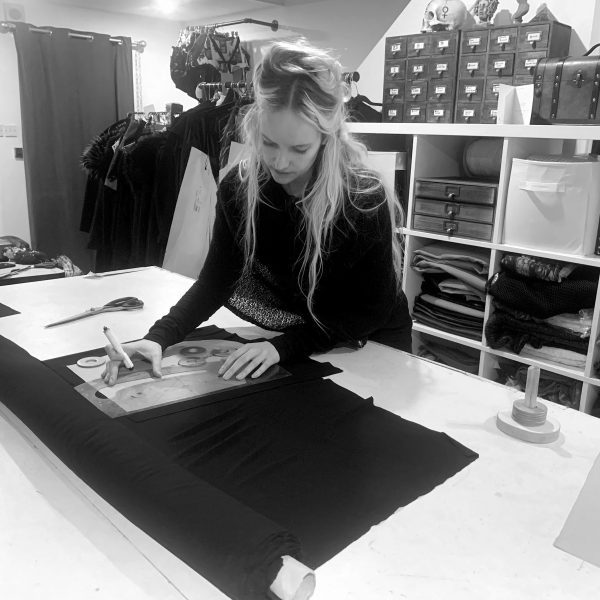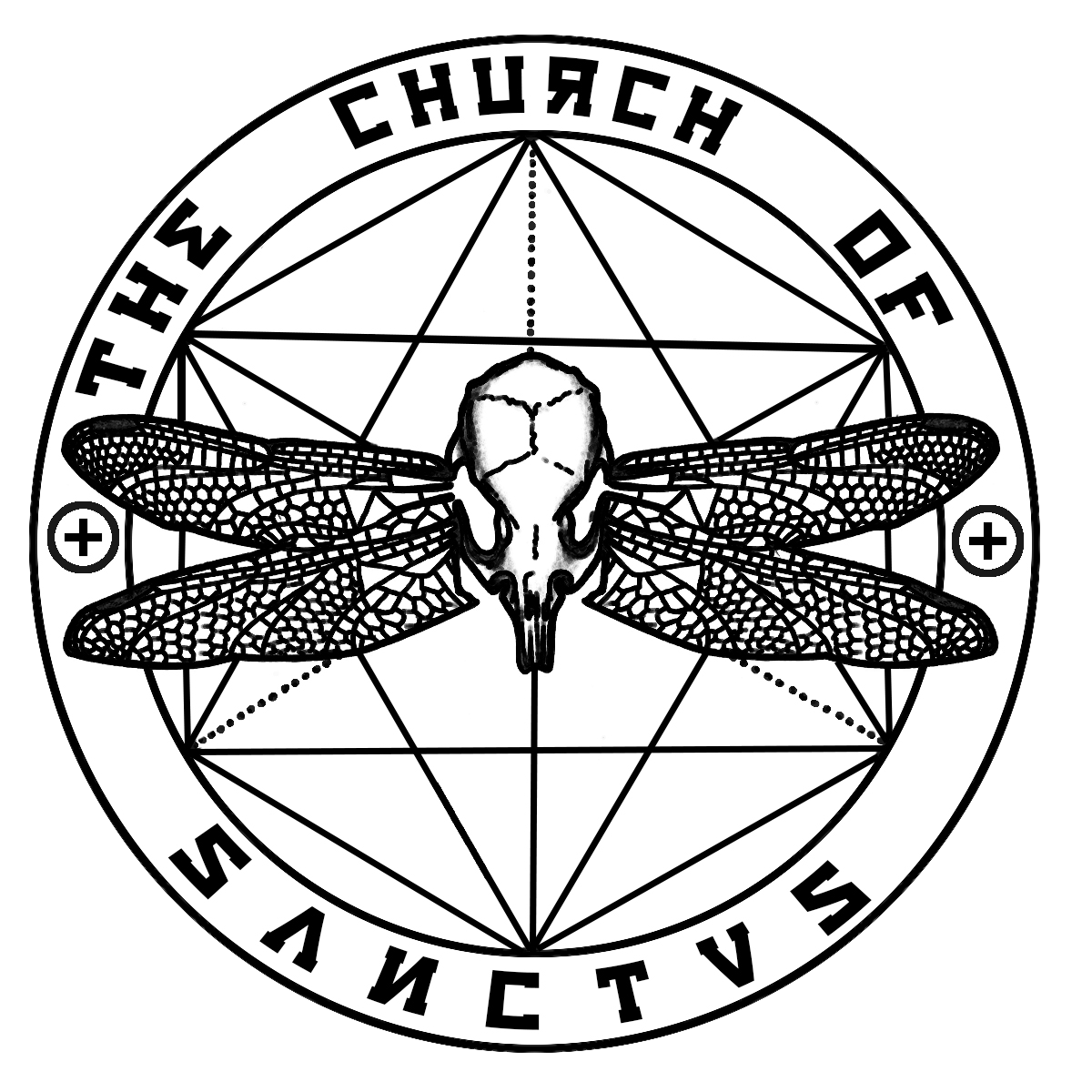I’ll start off by saying that although sustainability practises are very important to me, I don’t use the word itself to describe Church of Sanctus.
The reason being is that what ‘sustainability’ means to me might mean an entirely different thing to another company or individual.
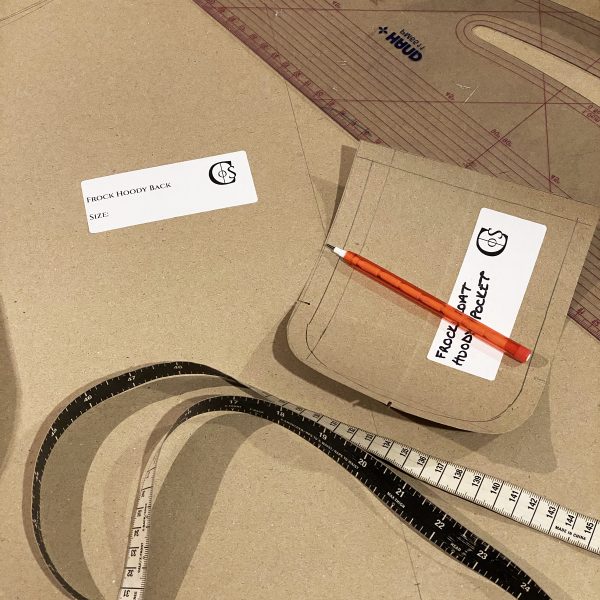
The definition is hard to pin down when there are so many elements that contribute to a brand’s environmental impact, the human beings on the supply chain and the overall effect on the planet. I think the lack of clarity on the term has been taken advantage of by companies that use the word for ‘greenwashing’ purposes (who aren’t at all sustainable but try to give off the impression that they are) because there is no industry standard definition of the word SUSTAINABLE.
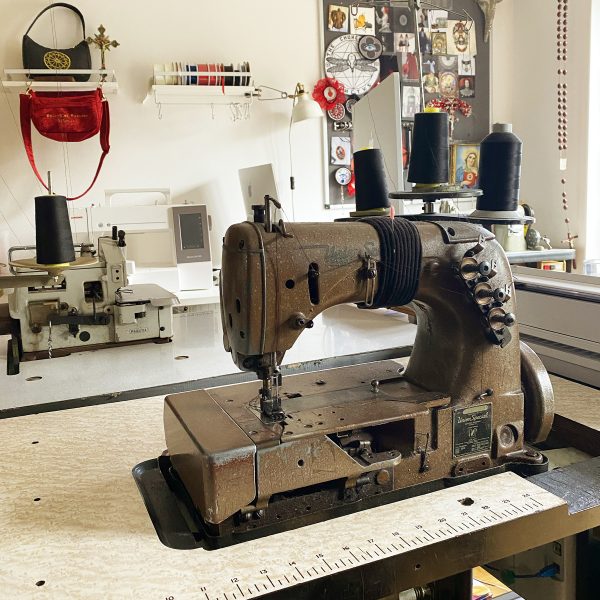
For me it might mean things like cutting my garments in such a way that reduces fabric waste, manufacturing my designs in my own studio here in London and using ‘end of roll’ fabrics. To another brand, they call themselves sustainable because they use organic fabrics and a certified fair trade factory in India to produce their garments. Another might brand themselves as sustainable simply because they do not use polyester.
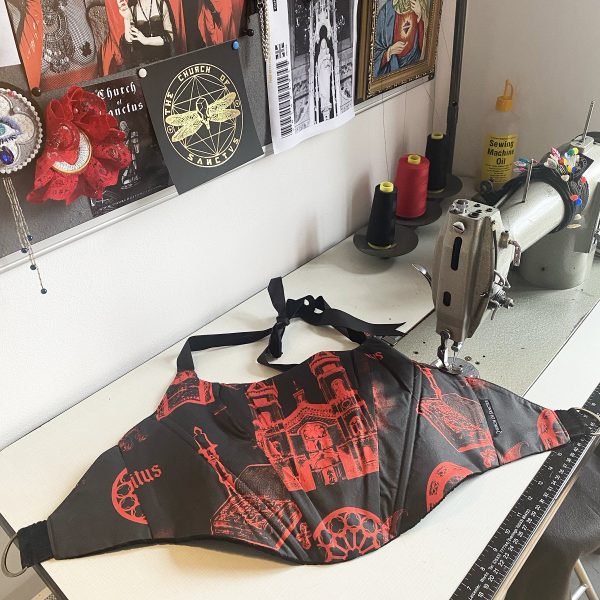
With all that being said, here are the ways I prioritise what I consider to be sustainabile practises at Church of Sanctus.
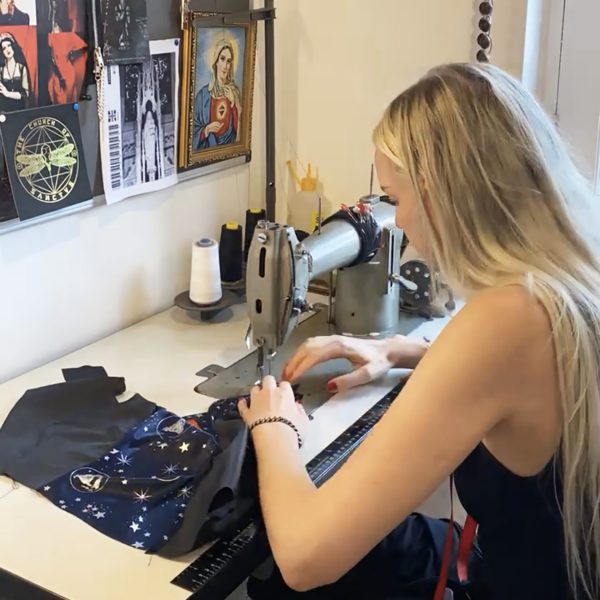
I use fabrics that are considered either organic or deadstock in my designs
I’ll assume you already know about organic fabrics so I’ll focus on explaining the other kind. Deadstock fabrics or ‘end of roll’ fabrics are considered leftovers in the industry, because they’re what’s leftover from production at fabric mills and factories used by much bigger brands than mine. For example I’ve sourced fabric originally produced by the brand M*lberry, left over from their bag production. They order their custom fabric directly from a mill and always order extra to accommodate any production errors. Once they’ve used what they need from the fabric mill, there might be a roll or two of fabric leftover that they no longer need and the factory or mill will sell it to a deadstock fabric dealer or directly to me to use up. Sometimes I can source a whole roll of fabric and sometimes it’s just a few metres which impacts how limited one of my designs might end up being.
I produce everything in house
Either myself or my two seamstresses who live locally to me make most of my stock. I make all the samples, accessories, corsets and one of a kind items and they make the bulk of production for me a.k.a. the stock on my website. This means I know 100% sure that my workers are treated fairly and paid fairly since I’m their boss and work with them directly. I’ve also started to work with a small women run and operated factory in North London to help make some of my bestsellers.
I do not overproduce
This one is simple – the more units you make as a company, the less sustainable you are. The most sustainable thing we can do as consumers is to not buy anything at all, and the more clothes produced in the world means more waste and more clothes in landfill. I’ve no plan to expand much more than my current garment turnover, I make around 25-40 styles a year if that. In contrast, H*M produce 25,000 styles a year and I’m sure we’d be horrified at the adjusted figure when we account for total units across their size range.
I prioritise garment quality
I intend for my garments to last years so to improve longevity of a garment, that means spending more on the production and more on the fabrics. That of course means my garments are a lot more expensive than fast fashion, but that’s the difference between a garment for life and a garment intended to be disposable.
I adopt a circular economy approach
When I cut out a garment, I lay out the pieces to ensure as least waste as possible without compromising the quality of the garment. My fabric scraps get kept for future projects, down to the really tiny pieces that I can use to make accessories or stuff a cuddly toy for my nephew. I donate my unwanted larger pieces of fabric to textiles students and there are fabric rag recycling schemes for the really small unusable pieces.
I don’t work with influencers who work with She*n and other fast fashion retailers
This one is really just out of principle. I actually rarely work with influencers at all since I don’t tend to have spare stock lying around for gifting.
I use recycled paper & cardboard for all my packaging and promotional material
Even the paper in my printer is recycled. For tissue paper and packing tape I use Noissue: https://noissue.co.uk/ The ribbon I use in packaging and corset lacing are made from recycled plastic bottles.
I hold an annual sample sale
Unsold stock and discarded designs that I didn’t include in a collection get sold in my annual sample sale, this way I don’t throw away designs that didn’t work out. I always finish a garment even if I didn’t love the end result, so that means it can still find an owner and I don’t have to throw it away. Everything in my annual sale is sold heavily discounted, so it also means that people who couldn’t usually afford one of my designs gets their hands on an ethically made garment for half the price – often even less.
I lead with education in mind
I try to punctuate my social media posts with educational content about how clothes are made and the reality of the horrors of fast fashion production, that way consumers can make an informed choice on what they choose to buy. That doesn’t mean they have to buy from me by any means but by being more educated they can understand better why buying from fast fashion retailers are harmful to human beings and the environment.
I practise what I preach
I’m a huge advocate of buying second hand and make it clear in my styling choices for my photoshoots. Shoes and accompanying styling are almost entirely sourced from Depop, eBay or Vinted and I love purchasing jewellery from small artisan jewellers who use recycled silver.
I make reselling or buying second hand Church of Sanctus easy
I have a Facebook group for people looking to buy or sell their second hand Church of Sanctus pieces: https://www.facebook.com/groups/3805646976125258
I donate to TreeNation every month
They plant trees in my forest for me here.
I think by laying out my practises it means you as a consumer can decide for yourself if Church of Sanctus is sustainable enough by your standards, instead of allowing me to dictate that to you.
Lucinda
